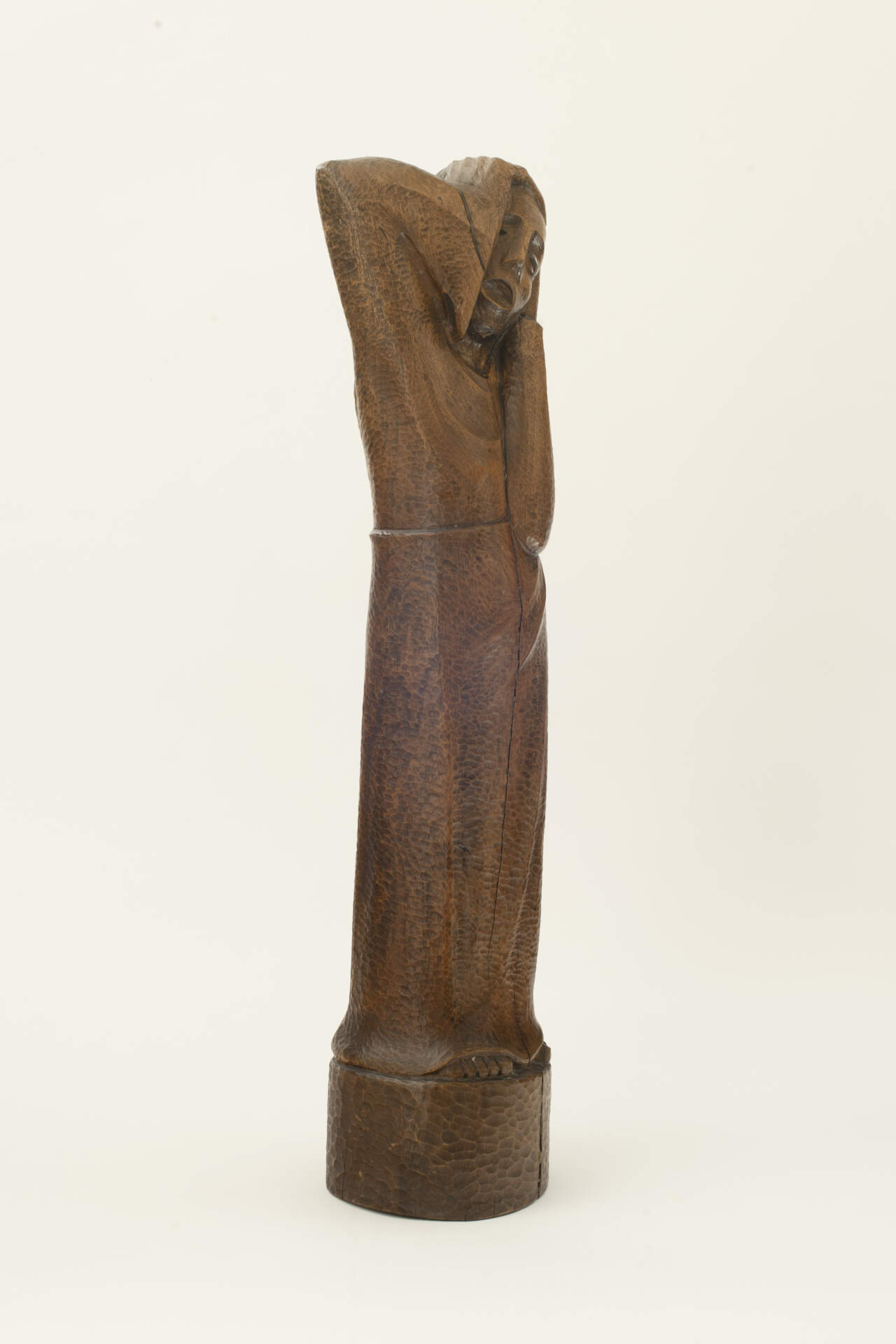William Ehrich (1897-1960)Horror
ca. 1942
carved walnut wood
37 x 26 x 9 inches
Promised gift of Roger Ehrich
William Ernst Ehrich was a born in the city of Köningsberg, Prussia (now Kaliningrad, Russia) at the end of the 19th century. After showing an aptitude for whittling wood as a child he received a scholarship to study sculpture at the Kunstakademie Königsberg, an art school established in the city in 1845. During his time there he worked with Herann Brachert (1890-1972) and Erich Schmidt-Kestner (1877-1941), important German sculptors of the period. He counted Ernst Barlach (1870-1938) and George Kolbe (1877-1947) among his major influences.
In 1929, Ehrich obtained a visa to move to the United Stated and made his way to Western New York, where he would teach at the Art Institute of Buffalo from 1931 until 1937. From 1938 until 1942 he created public art for the Works Progress Administration (WPA) which included various projects for the Buffalo Zoo. From 1939 until 1960 he worked as an instructor at the Memorial Art Gallery in Rochester, New York. It was during this time that he probably completed this work.
The carved walnut figure Horror was created in the expressionist style, popular in Germany in the 1920s when Ehrich was a student. The agony of the figure in Horror was perhaps meant to reflect the atrocities of the Second World War, raging at the time that the sculpture was made. The Battle of Stalingrad took place that year. It was the bloodiest battle in the history of warfare with nearly two million casualties combined on both the German and Soviet sides. The Battle of Köningsberg would destroy Ehrich’s hometown a few years later in 1945.
Tullis Johnson, Curator and Manager of Exhibitions
